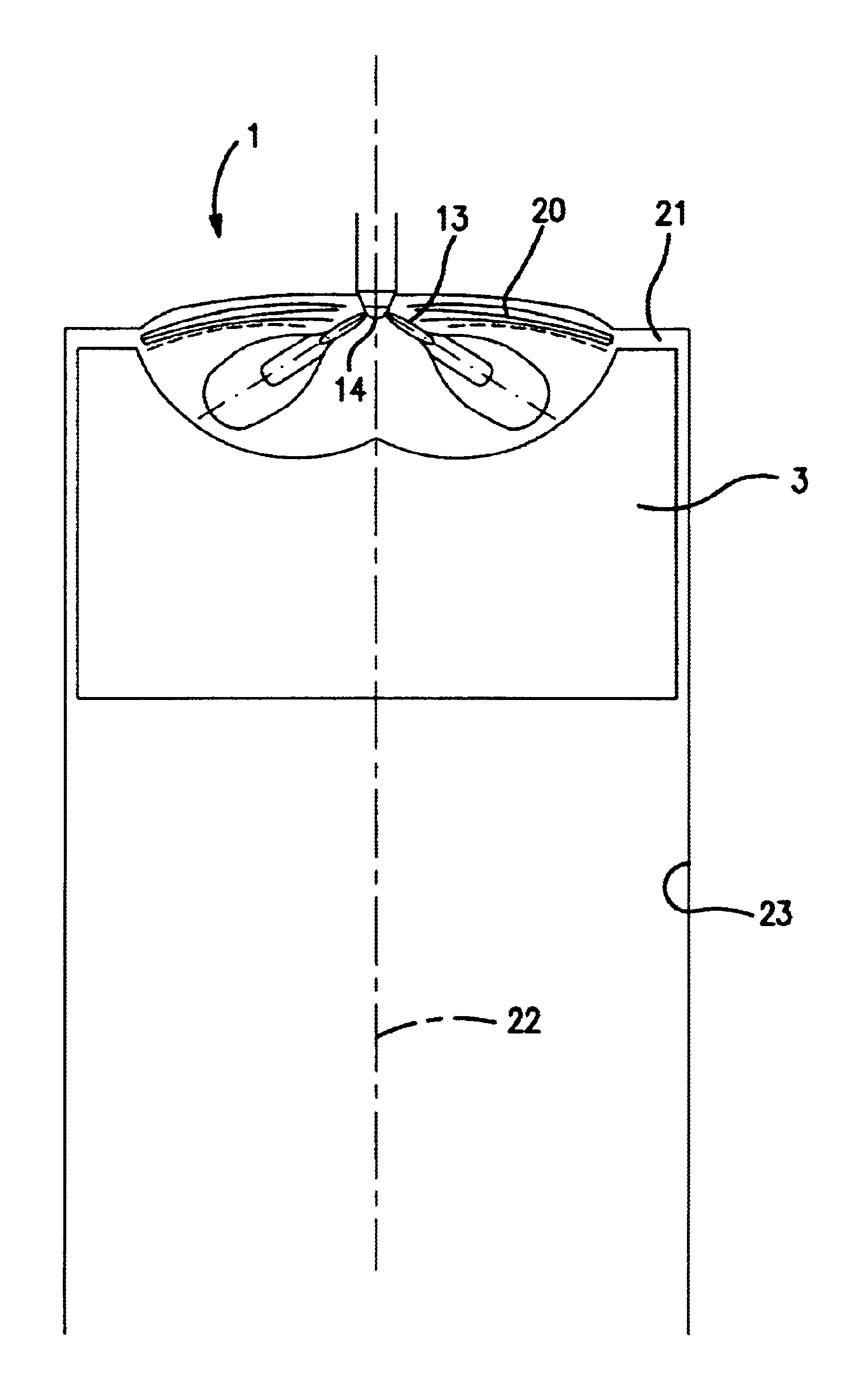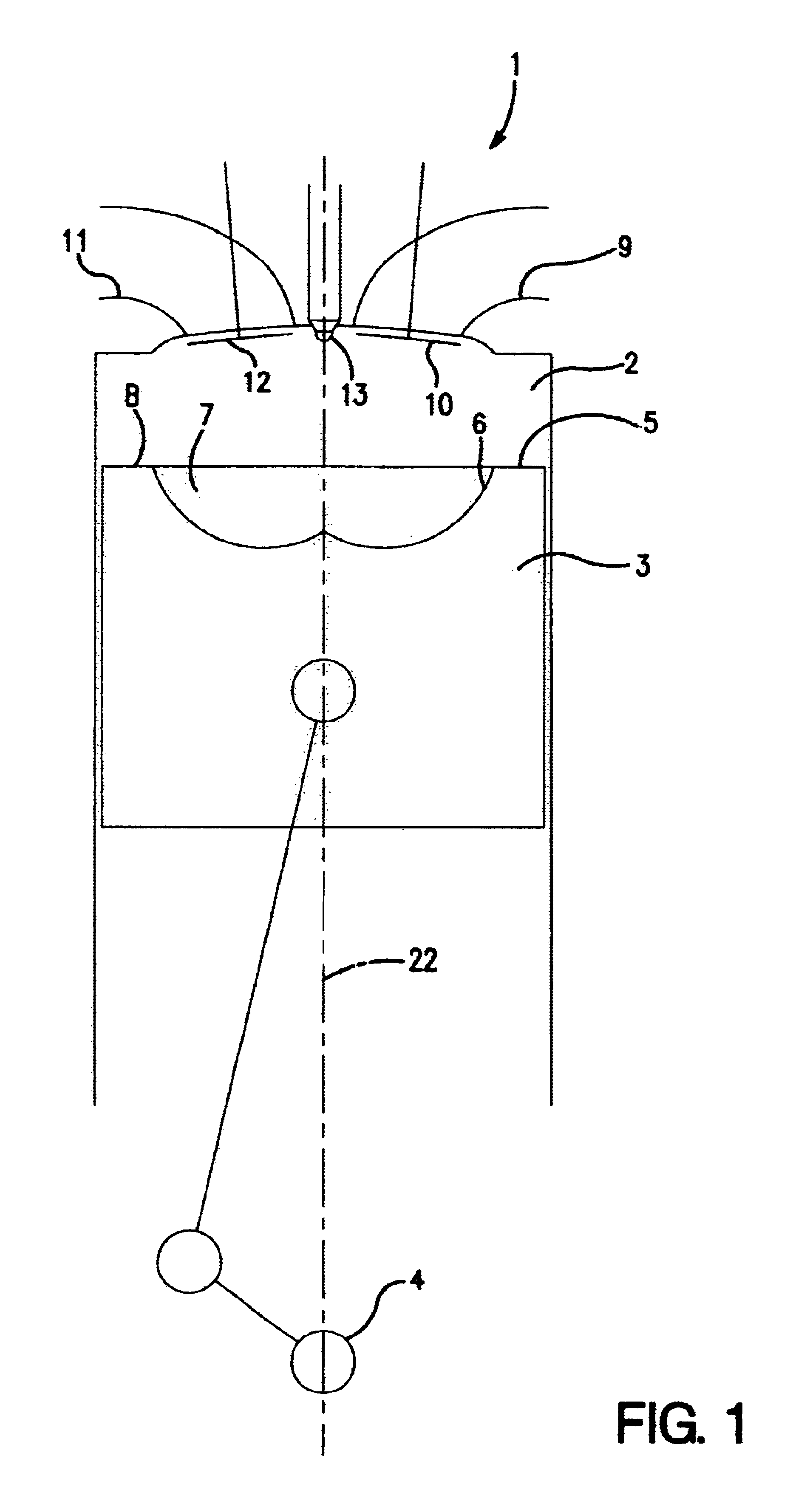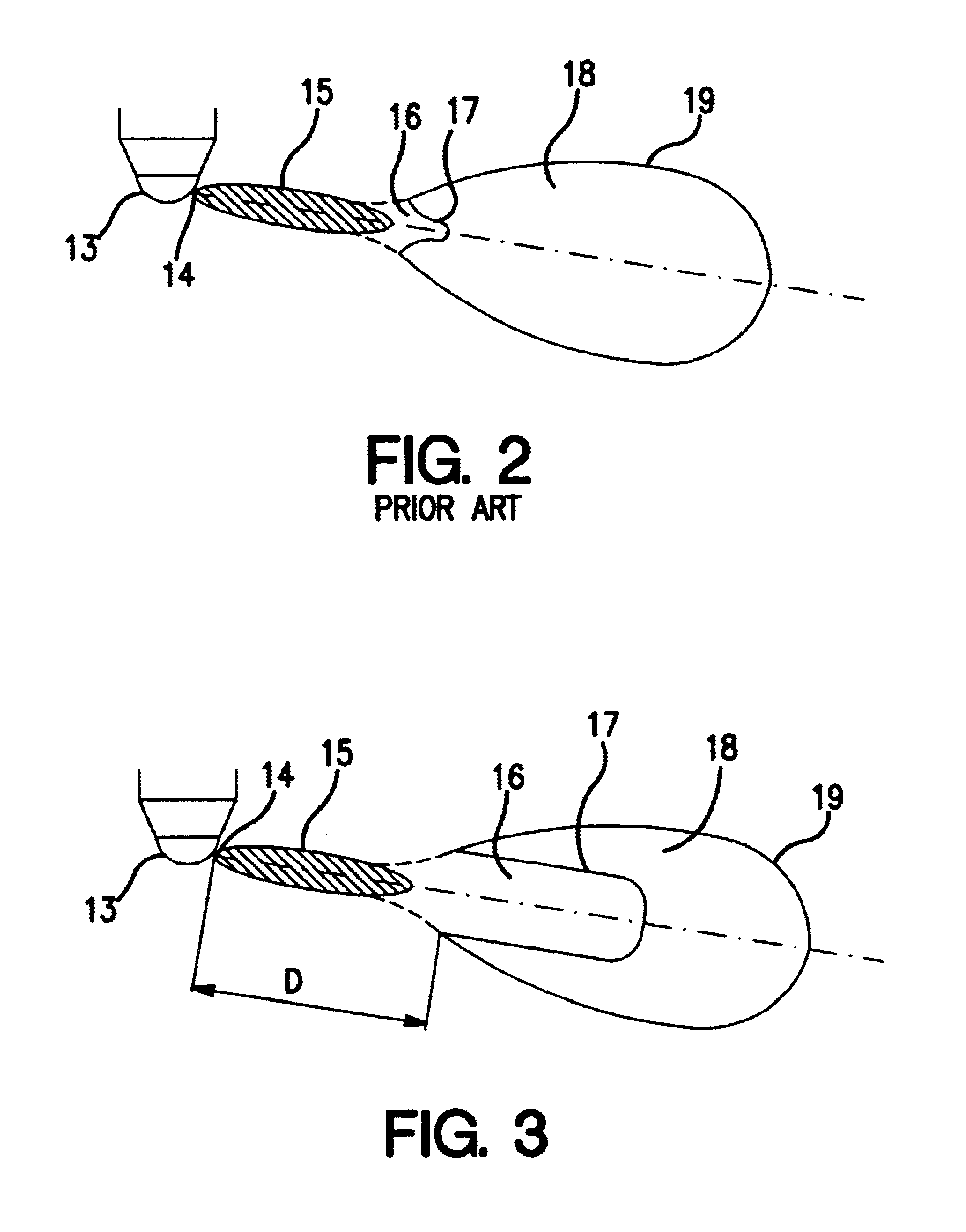Method for controlling a combustion process in a combustion engine
- Summary
- Abstract
- Description
- Claims
- Application Information
AI Technical Summary
Benefits of technology
Problems solved by technology
Method used
Image
Examples
second embodiment
In an advantageous second embodiment of the method according to the invention, the mixing is carried out locally, since fuel and cylinder gas are mixed in regions upstream of the regions in the spray where combustion takes place and since the injection continues after ignition has been realized, i.e. spray-controlled combustion. The advantage with this is that a more robust combustion process is obtained, which can handle all load ranges, at the same time as ultra-low emission levels are obtained.
third embodiment
In an advantageous third embodiment of the method according to the invention, the mixing is carried out globally, since essentially the entire quantity of fuel corresponding to one combustion cycle is injected and mixed in the cylinder before ignition and combustion are realized. This embodiment, too, can handle all load ranges, at the same time as ultra-low emission levels are obtained. This embodiment has many characteristics in common with HCCI. The essential difference is that the injection method itself creates the necessary mixing. Unlike the prior art, this embodiment can also handle high engine load ranges, at the same time as ultra-low emission levels are obtained without a far too rapid, strength-limiting build-up of pressure in the cylinder. The reason why it has been possible to limit the pressure build-up lies in a combination of a sufficiently large quantity of EGR, sufficiently low temperature and sufficiently low pressure in the cylinder, which limits the rate of the...
PUM
 Login to View More
Login to View More Abstract
Description
Claims
Application Information
 Login to View More
Login to View More - R&D
- Intellectual Property
- Life Sciences
- Materials
- Tech Scout
- Unparalleled Data Quality
- Higher Quality Content
- 60% Fewer Hallucinations
Browse by: Latest US Patents, China's latest patents, Technical Efficacy Thesaurus, Application Domain, Technology Topic, Popular Technical Reports.
© 2025 PatSnap. All rights reserved.Legal|Privacy policy|Modern Slavery Act Transparency Statement|Sitemap|About US| Contact US: help@patsnap.com



